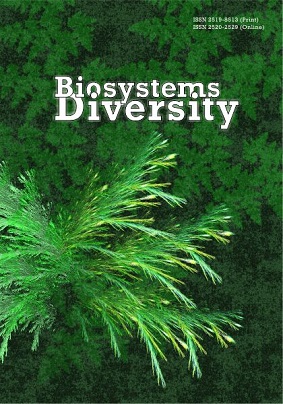Bacterial synthesis of nanoparticles: A green approach
Bacterial synthesis of nanoparticles: A green approach
Author(s): S. I. Tsekhmistrenko, V. S. Bityutskyy, O. S. Tsekhmistrenko, L. P. Horalskyi, N. O. Tymoshok, M. Y. SpivakSubject(s): Agriculture, Energy and Environmental Studies, Human Ecology, Environmental interactions
Published by: Дніпропетровський національний університет імені Олеся Гончара
Keywords: nanoparticles; bacteria; methods of "green" synthesis; application of nanoparticles;
Summary/Abstract: In recent decades, the attention of scientists has been drawn towards nanoparticles (NPs) of metals and metalloids. Traditional methods for the manufacturing of NPs are now being extensively studied. However, disadvantages such as the use of toxic agents and high energy consumption associated with chemical and physical processes impede their continued use in various fields. In this article, we analyse the relevance of the use of living systems and their components for the development of "green" synthesis of nanoobjects with exceptional properties and a wide range of applications. The use of nano-biotechnological methods for the synthesis of nanoparticles has the potential of large-scale application and high commercial potential. Bacteria are an extremely convenient target for green nanoparticle synthesis due to their variety and ability to adapt to different environmental conditions. Synthesis of nanoparticles by microorganisms can occur both intracellularly and extracellularly. It is known that individual bacteria are able to bind and concentrate dissolved metal ions and metalloids, thereby detoxifying their environment. There are various bacteria cellular components such as enzymes, proteins, peptides, pigments, which are involved in the formation of nanoparticles. Bio-intensive manufacturing of NPs is environmentally friendly and inexpensive and requires low energy consumption. Some biosynthetic NPs are used as heterogeneous catalysts for environmental restoration, exhibiting higher catalytic efficiency due to their stability and increased biocompatibility. Bacteria used as nanofactories can provide a new approach to the removal of metal or metalloid ions and the production of materials with unique properties. Although a wide range of NPs have been biosynthetic and their synthetic mechanisms have been proposed, some of these mechanisms are not known in detail. This review focuses on the synthesis and catalytic applications of NPs obtained using bacteria. Known mechanisms of bioreduction and prospects for the development of NPs for catalytic applications are discussed.
Journal: Biosystems Diversity
- Issue Year: 28/2020
- Issue No: 1
- Page Range: 9-17
- Page Count: 9
- Language: English

